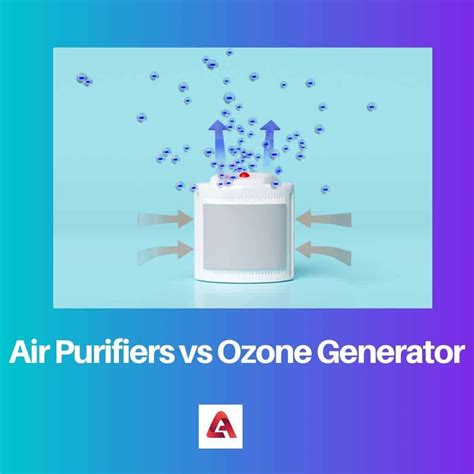Introduction: The Battle for Air Quality
Air pollution is a growing concern worldwide, affecting both our health and the environment. However, the solutions to this problem are not always clear-cut. Two common methods of air purification are air purifiers and ozone gas. Both have their advantages and disadvantages, and choosing the right one for your needs can be challenging.

Air Purifiers: The Mechanical Solution
An air purifier is a device that removes contaminants from the air. They typically use fans to draw air through a filter, which traps pollutants such as dust, pollen, smoke, and pet dander. Air purifiers are effective at removing these particles from the air, which can improve air quality and reduce allergies and respiratory problems.
Benefits of Air Purifiers:
- Effective at removing particles: Air purifiers are very effective at removing particles from the air, including dust, pollen, smoke, and pet dander.
- Can reduce allergies and respiratory problems: By removing these particles from the air, air purifiers can help to reduce allergies and respiratory problems.
- Easy to use: Air purifiers are easy to use. Simply plug them in and turn them on.
Drawbacks of Air Purifiers:
- Can be expensive: Air purifiers can be expensive, especially for larger spaces.
- May not remove all pollutants: Air purifiers are not effective at removing all pollutants from the air, such as ozone and other gases.
- Can be noisy: Some air purifiers can be noisy, especially on higher settings.
Ozone Gas: The Chemical Solution
Ozone gas is a naturally occurring gas that is found in the Earth’s atmosphere. It is a powerful oxidizing agent, which means that it can break down organic compounds and oxidize other substances. Ozone gas is used in a variety of applications, including air purification and water treatment.
Benefits of Ozone Gas:
- Effective at removing odors: Ozone gas is effective at removing odors from the air, such as smoke, pet odors, and cooking odors.
- Can kill bacteria and viruses: Ozone gas can kill bacteria and viruses, which can help to reduce the spread of illness.
- Can be used to deodorize water: Ozone gas can be used to deodorize water, such as swimming pools and hot tubs.
Drawbacks of Ozone Gas:
- Can be harmful to health: Ozone gas can be harmful to health if inhaled in high concentrations. It can cause respiratory problems, such as asthma and bronchitis.
- Not effective at removing particles: Ozone gas is not effective at removing particles from the air, such as dust, pollen, smoke, and pet dander.
- Can damage furniture and other belongings: Ozone gas can damage furniture, fabrics, and other belongings made of organic materials.
Choosing Between Air Purifiers and Ozone Gas
Ultimately, the best way to choose between an air purifier and ozone gas is to consider your specific needs and preferences. If you are primarily concerned with removing particles from the air, such as dust, pollen, and pet dander, then an air purifier is a good option. However, if you are primarily concerned with removing odors, killing bacteria and viruses, or deodorizing water, then ozone gas may be a better choice.
Conclusion: The Future of Air Purification
The battle for air quality is an ongoing one. However, by understanding the benefits and drawbacks of both air purifiers and ozone gas, you can make the best decision for your needs. As technology continues to develop, air purification





















